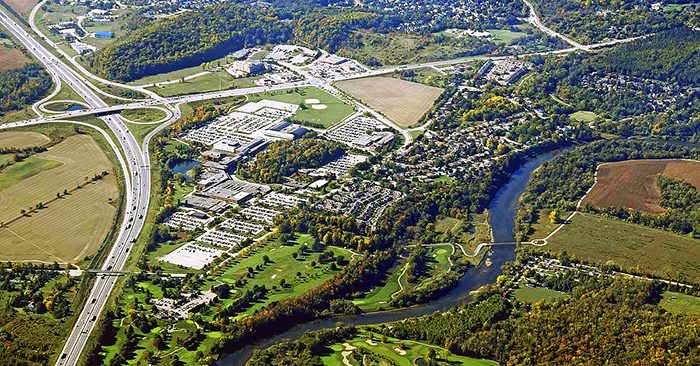What are the Land-use Planning Classifications for Noise Areas in Ontario?

Noise Area Classifications in Ontario Land-Use Planning Explained
Welcome to another edition of Frequently Asked Questions about Noise, Vibration, and Acoustics. In this video series, we answer the questions we hear most often from clients or through inquiries via our website.
My name is Yvonne Lo and I’m a project engineer at HGC. In this video series we’ll be talking about frequently asked questions that we hear from our clients and through inquiries on our website.
Today’s question is: What are noise area classifications in the context of land-use planning in Ontario?
Clients will often ask: Why is the area that I’m currently developing in considered to be a Class 1 area? I’m developing in another area, and that’s considered to be a Class 4 area.
The sound level limits there are less stringent, and subsequently the noise mitigation measures required there are also less significant. Why is one area considered to be Class 1 while another considered to be Class 4? To fully answer this question, we’ll need to define what noise area classifications are.
NPC 300 Noise Area Classifications in Ontario
Noise area classifications are described in the Ministry of Environment, Conservation and Parks NPC 300 publication, which is the environmental noise guideline for stationary and transportation noise sources. This document outlines the limits of sound level impacts from transportation and stationary noise sources on sensitive uses.
Sensitive uses can range from proposed or existing residential uses; places of worship such as churches; as well as daycares, as examples.
Transportation vs Stationary Noise Sources
As described earlier, there are two types of noise that we consider in the guideline. The first being transportation noise. So we can think of anything ranging from road, rail or aircraft sources. The second type being stationary noise sources, which relate to sounds emanating from a facility. Such sources include rooftop mechanical equipment associated with a commercial plaza; a drive thru speaker board associated with a restaurant; a car wash facility; as well as activities within an industrial facility.
Now it’s important to note that transportation sound level limits are uniform across the board. That is, irrespective of what area classification a development is considered to be located in, the sound level limits for transportation noise sources are the same. However, stationary noise level limits do depend on the area classifications that will we will now be describing.
The 4 Environmental Noise Area Classifications in Ontario
-
Class 1 Noise Area Classification
There are four area classifications included in the environmental noise guideline. The first being a Class 1 area which we consider to be an urban area where the ambient noise is dominated by human activity. So we can think of areas such as downtown Toronto or other urban centers.
-
Class 3 Noise Area Classification
A Class 3 area is considered to be a rural area where the ambient noise is dominated by natural sounds. So we can think of areas such as college or resort areas, as well as agricultural zones.
-
Class 2 Noise Area Classification
A Class 2 area is considered to be a semi-urban area where the daytime acoustical characteristics resembles a Class 1 area and the nighttime acoustical characteristics resembles a Class 3 area.
-
Class 4 Noise Area Classification
Now a Class 4 area is a bit of a special one and is the latest area classification included in the guideline. Class 4 areas resembles characteristics of both Class 1 and Class 2 areas and are considered to be in an urban or semi-urban environment. Class four areas are in proximity to existing, lawfully established stationary noise sources such as an industrial facility. Now it’s really important to note that there are few Class 4 areas. A municipality may designate an area to be Class 4 based on the fact that residential sites nearby are unable to meet the Class 1 or Class 2 limit with reasonable mitigation measures. The municipality will also designate an area to be Class 4 Based on the results of a noise study conducted by an acoustical consultant. An industry may also request an area be designated as Class 4, such that it can continue its operation without affecting its Environmental Compliance Approvals, which is what we commonly call ECA. Class 4 areas also require additional acoustical recommendation measures. For example, Class 4 areas require an additional warning clause that clearly states that it is in a Class 4 area. Residential sites will also require the inclusion of central air conditioning, as well as the use of upgraded building constructions..
In Conclusion
So in conclusion, there are four area classifications included in NPC-300, the Ontario environmental noise guideline publication.
However, as you can see, the descriptions of these area classifications are largely qualitative. There are no absolutes, and the final classification of an area is subject to the approval of the appropriate land-use planning authority.
If you have any further questions related to land-use planning or if you’d like an additional question to be answered in a future edition of this video series, please feel free to reach out to us.
